Parable of the Wicked Husbandmen
Mount Calvary Church
A Roman Catholic Congregation of
The Personal Ordinariate of the Chair of St. Peter
Anglican Use
Trinity XVII
Common
Missa de S. Maria Magdalena, Willan
Prelude
Hymns
Christ is made the sure foundation
In heavenly love abiding
O worship the King, all glorious above
Anthems
Vinea mea electa, Johann Michael Haydn
Jerusalem, Jerusalem, Giaches de Wert
Postlude
Christ is made the sure foundation was translated by the great Anglican hymnologist John Mason Neale (1818-1866) from the Latin hymn Angularis fundamentum. Christ is the cornerstone of the Church; insofar as we are aligned to Him, we are made into a unity, a temple where God is praised. We ask for His blessings that we may praise Him forever.
The hymn is based on Ephesians 2:20-22: “having been built on the foundation of the apostles and prophets, Jesus Christ Himself being the chief cornerstone, in whom the whole building, being fitted together, grows into a holy temple in the Lord, in whom you also are being built together for a dwelling place of God in the Spirit.”
And on I Peter 2:4-7: “Coming to Him as to a living stone, rejected indeed by men, but chosen by God and precious, you also, as living stones, are being built up a spiritual house, a holy priesthood, to offer up spiritual sacrifices acceptable to God through Jesus Christ. Therefore it is also contained in the Scripture, ‘Behold, I lay in Zion A chief cornerstone, elect, precious,
And he who believes on Him will by no means be put to shame.’
Therefore, to you who believe, He is precious; but to those who are disobedient,
‘The stone which the builders rejected
Has become the chief cornerstone.’”
Christ is made the sure Foundation,
Christ the Head and Cornerstone,
Chosen of the Lord and precious,
Binding all the Church in one;
Holy Zion’s help forever,
And her confidence alone.All that dedicated city,
dearly loved of God on high,
in exultant jubilation
pours perpetual melody;
God the One in Three adoring
in glad hymns eternally.To this temple, where we call Thee,
Come, O Lord of Hosts, today:
With Thy wonted loving-kindness
Hear Thy people as they pray;
And Thy fullest benediction
Shed within its walls alway.Here vouchsafe to all Thy servants
What they ask of Thee to gain,
What they gain from Thee forever
With the blessed to retain,
And hereafter in Thy glory
Evermore with Thee to reign.
Here is a parish (RC? Anglican?) singing it.
Here is the Latin hymn which Neale translated-paraphrased:
Angularis fundamentum
lapis Christus missus est,
qui parietum compage
in utroque nectitur,
quem Sion sancta suscepit,
in quo credens permanet.Omnis illa Deo sacra
et dilecta civitas,
plena modulis in laude
et canore jubilo,
trinum Deum unicumque
cum fervore prædicat.Hoc in templo, summe Deus,
exoratus adveni,
et clementi bonitate
precum vota suscipe;
largam benedictionem
hic infunde jugiter.Hic promereantur omnes
petita acquirere
et adepta possidere
cum sanctis perenniter,
paradisum introire
translati in requiem.
Here is the Gregorian chant for this Latin hymn.
The son of an Anglican clergyman, James Mason Neale (1818-1866) intended to follow the same path. Hymn scholar Leon Litvack notes, “Neale entered Cambridge as an Evangelical, but emerged an Anglo-Catholic.” Fascinated by the tracts of the Oxford Movement, he became intensely interested in the medieval church. The result was an interest in a “high church” in contrast to an “evangelical” perspective that influenced developments in liturgy and architecture as well as hymn singing.
Neale was a student of worship in the early church and one of the first to translate ancient Greek and Latin texts into metrical English for singing. American hymnologist William Reynolds notes that “His strong attachment to the old Breviary hymns [of the medieval church] caused him to urge the omission of the Protestant hymns from the Anglican service in favor of translations of medieval hymns.”
Though an ordained Anglican priest, Neale was unable to serve a parish due to his health. He was appointed as a warden of a home for indigent old men, but was not permitted to serve as a priest because he had alienated the hierarchy of the Anglican Church due to his independent spirit regarding his beliefs and rigorous devotional practices. His minimal caretaker duties, however, allowed Neale time to pursue his scholarly studies.
Henry Thomas Smart composed REGENT SQUARE for the Horatius Bonar doxology “Glory be to God the Father.” The tune was first published in the English Presbyterian Church’s Psalms and Hymns for Divine Worship (1867), of which Smart was music editor. Because the text editor of that hymnal, James Hamilton, was minister of the Regent Square Church, the “Presbyterian cathedral” of London, the tune was given this title.
Henry Thomas Smart (26 October 1813 – 6 July 1879) was an English organist and composer. He was born in London, a nephew of the conductor Sir George Smart and son of a music publisher, orchestra director and accomplished violinist (also called Henry Smart). He was educated at Highgate School and then studied for the law, but soon gave this up for music.
In 1831 Smart became organist of Blackburn parish church, where he wrote his first important work, an anthem; then of St Giles-without-Cripplegate; St Luke’s, Old Street; and finally of St Pancras New Church, in 1864, which last post he held at the time of his death, less than a month after receiving a government pension of £100 per annum. Smart was also skilled as a mechanic, and designed several organs.
Though highly rated as a composer by his English contemporaries, Smart is now largely forgotten, save for his hymn tune Regent Square, which retains considerable popularity, and which is commonly performed with the words “Christ is Made the Sure Foundation”, “Light’s Abode, Celestial Salem”, or “Angels from the Realms of Glory”. His many compositions for the organ (some of which have been occasionally revived in recent years) were described as “effective and melodious, if not strikingly original” by the 1911 Encyclopædia Britannica, which also praised his part songs. A cantata by him, The Bride of Dunkerron was written for the Birmingham Festival of 1864; another cantata was a version of the play King René’s Daughter (1871). The oratorio Jacob was created for Glasgow in 1873; and his opera Bertha was produced with some success at the Haymarket in 1855.
___________________________
In heavenly love abiding was written by Anna Letitia Waring. Abide is key word in Scripture: “As the Father loved Me, I also have loved you; abide in My love. If you keep My commandments, you will abide in My love, just as I have kept My Father’s commandments and abide in His love.” Jesus Himself is obedient to His Father and keeps the Commandments that the Father has given Him, and in that way Jesus abides in His Father’s love. The Father’s will was that the Son should become man and die for us, trusting in the Father to raise Him from the dead. We likewise trust in Jesus in the storms of life. The hymn then refers to Psalm 23, The Lord is my shepherd. Even when we walk through the valley of the shadow of death, Jesus walks with us, especially as we receive Him in the Eucharist, and we know that he will lead us to the green pastures of heaven.
1 In heavenly love abiding,
no change my heart shall fear;
and safe is such confiding,
for nothing changes here:
the storm may roar without me,
my heart may low be laid;
but God is round about me,
and can I be dismayed?
2 Wherever he may guide me,
no want shall turn me back;
my Shepherd is beside me,
and nothing can I lack:
his wisdom ever waketh,
his sight is never dim,
he knows the way he taketh,
and I will walk with him.
3 Green pastures are before me,
which yet I have not seen;
bright skies will soon be o’er me,
where darkest clouds have been;
my hope I cannot measure,
my path to life is free;
my Saviour has my treasure,
and he will walk with me.
Here is the Mormon Tabernacle Choir. Here is a boys’ choir.
Anna Letitia Waring (or Anna Laetitia Waring) (19 April 1823 – 10 May 1910) was a Welsh poet and hymn-writer. She was born at Plas-y-Felin, Neath, third of the seven children of Elijah Waring (1787-1857) and his wife, Deborah. Her family were Quakers, but she became an Anglican and was baptized into the Church of England in 1842, at St Martin Church, Winnall, Winchester. Several members of her family had literary interests. She learned Hebrew in order to study the Old Testament in the original.
In 1850, Anna published her first work, Hymns and Meditations. This was to be reprinted and extended many times. Additional Hymns (1858) was integrated into later editions of Hymns and Meditations.
Anna was pious, reserved, and given to “good works”. Anna became involved in philanthropic work, particularly as a supporter of the Discharged Prisoners’ Aid Society. According to her friend Mary S. Talbot, Waring “visited in the prisons of Bridewell, and at Horfield, Bristol, for many years. To one who spoke to her of the painfulness of such work she answered, ‘It is like watching by a filthy gutter to pick out a jewel here and there, as the foul stream flows by.'” Waring died unmarried at her home in Clifton, Bristol on 10 May 1910.
NYLAND, named for a province in Finland, is a folk melody from Kuortane, South Ostrobothnia, Finland. In fact, the tune is also known as KUORTANE. NYLAND was first published with a hymn text in an appendix to the 1909 edition of the Finnish Suomen Evankelis Luterilaisen Kirken Koraalikirja. It gained popularity in the English-speaking world after David Evans’s use of it in the British Church Hymnary of 1927 as a setting for Anna 1. Waring’s text “In Heavenly Love Abiding.”
David Evans was an important leader in Welsh church music. Educated at Arnold College, Swansea, and at University College, Cardiff, he received a doctorate in music from Oxford University. His longest professional post was as professor of music at University College in Cardiff (1903-1939), where he organized a large music department. He was also a well-known and respected judge at Welsh hymn-singing festivals and a composer of many orchestral and choral works, anthems, service music, and hymn tunes.
NYLAND is a modified rounded bar-form tune (AA’BA’) with a wide-ranging melodic contour and a fine harmonization for part singing.
____________________________
O worship the King, all glorious above was written by Sir Robert Grant (1735-1838).
In 1835 Robert Grant wrote a text that helps us see the creation story in a new light. His meditation on the creation theme of Psalm 104 consists of six verses that parallel the six days of creation. Grant focuses on how creation is a testimony to God’s “measureless might.” The fourth and fifth verse we celebrate God’s saving grace to his creation. When God took that seventh day of rest, he was not signaling an end. He continued to bless His creation, even those as feeble and frail as us. In the last verse, Grant points to Christ as the ultimate reconciler of a broken, but still beautiful creation. The last rhyme end/Friend, emphasizes that the purpose (telos-end) of our creation was that we should in the end (forever) forever enjoy the friendship of God in Christ.
O worship the King all glorious above,
O gratefully sing His power and His love;
Our Shield and Defender, the Ancient of Days,
Pavilioned in splendor, and girded with praise.O tell of His might, O sing of His grace,
Whose robe is the light, whose canopy space.
His chariots of wrath the deep thunderclouds form,
And dark is His path on the wings of the storm.The earth with its store of wonders untold,
Almighty, Thy power hath founded of old;
Hath stablished it fast by a changeless decree,
And round it hath cast, like a mantle, the sea.Thy bountiful care what tongue can recite?
It breathes in the air, it shines in the light;
It streams from the hills, it descends to the plain,
And sweetly distills in the dew and the rain.Frail children of dust, and feeble as frail,
In Thee do we trust, nor find Thee to fail;
Thy mercies how tender, how firm to the end,
Our Maker, Defender, Redeemer, and Friend!
Here is the tune for the organ, for the piano and women’s choir, for hand bells, for two violins, for women’s choir and drums and stuff, for praise band, for acoustic guitar, for piano and cello, for euphonium and piano, with handbells AND ballerina, for trombone and drums, on the harmonium.
Robert Grant
Sir Robert Grant was the second son of Mr. Charles Grant, sometime Member of Parliament for Inverness, and a Director of the East India Company, was born in 1785, and educated at Cambridge, where he graduated in 1806. The Grants were members of the Clapham set, an Evangelical group in the Church of England. Called to the English Bar in 1807, he became Member of Parliament for Inverness in 1826; in that position, through his persistent efforts a bill was eventually passed which emancipated England’s Jews.
He became a Privy Councillor in 1831; and Governor of Bombay, 1834, where he had opportunity to put his social concerns into practice, for the poverty and spiritual condition of the common people were appalling. He died at Dapoorie, in Western India, July 9, 1838. As a hymn writer of great merit he is well and favorably known. His hymns, “O worship the King”; “Saviour, when in dust to Thee”; and “When gathering clouds around I view,” are widely used in all English-speaking countries. Some of those which are less known are marked by the same graceful versification and deep and tender feeling. The best of his hymns were contributed to the Christian Observer, 1806-1815, under the signature of “E—y, D. R.”; and to Elliott’s Psalms & Hymns, Brighton, 1835. In the Psalms & Hymns those which were taken from the Christian Observer were rewritten by the author. The year following his death his brother, Lord Glenelg, gathered 12 of his hymns and poems together, and published them.
Joseph Martin Kraus
The tune is LYONS, composed by Joseph Martin Kraus (20 June 1756 – 15 December 1792), a composer in the classical era who was born in Miltenberg am Main, Germany. He moved to Sweden at age 21, and died at the age of 36 in Stockholm. He is sometimes referred to as “the Swedish Mozart”, and had a life span which was very similar to that of Mozart’s.
Anthems
Christus factus est pro nobis obediens usque ad mortem, mortem autem crucis. Propter quod et Deus exaltavit illum et dedit illi nomen, quod est super omne nomen.
Christ became obedient for us unto death, even death on the cross. Therefore God exalted Him and gave Him a name which is above all names.
Johann Michael Haydn (1707-1806) was an Austrian composer, the younger brother of Joseph Haydn. Michael Haydn, like his brother, was a chorister at St Stephen’s in Vienna. Shortly after leaving the choir-school, he was appointed Kapellmeister at Großwardein and later, in 1762, at Salzburg. The latter office he held for forty-three years, during which time he wrote over 360 compositions for the church and much instrumental music. He was an intimate friend of Mozart, who had a high opinion of his work, and the teacher of Carl Maria von Weber.
Haydn’s sacred choral works are generally regarded as his most important; his musical taste and skill showed themselves best in his church compositions and were already in his lifetime old-fashioned. Michael remained close to Joseph all of his life. Joseph regarded his brother’s music highly, to the point of feeling Michael’s religious works were superior to his own (possibly for their devotional intimacy, as opposed to Joseph’s monumental and majestic more secularized symphonic style
Here is a Hungarian performance.
____________________
Jerusalem, quæ occidis prophetas, et lapidas eos qui mittuntur ad te, quoties volui congregare filios tuos, quem admodum avis nidum suum sub pennis, et noluisti?
O Jerusalem, Jerusalem, thou that killest the prophets, and stonest them which are sent unto thee, how often would I have gathered thy children together, even as a hen gathereth her chickens under her wings, and ye would not!
Giaches de Wert (also Jacques/Jaches de Wert, Giaches de Vuert; 1535 – 6 May 1596) was a Franco-Flemish composer of the late Renaissance, active in Italy. Intimately connected with the progressive musical center of Ferrara, he was one of the leaders in developing the style of the late Renaissance madrigal.
The style of his sacred music varies from simple homophony, designed for absolute clarity of textual expression in conformance with the dictates of the Council of Trent, to motet settings similar in expressive intensity to his madrigals including passages of surprising chromaticism not unlike that of Gesualdo. This is particularly true in the 1581 collections: Ascendente Jesu, for example, contains colorful examples of text-painting such as he used in the works he was composing for the Ferrarese court at the time.
Here is his Egressus Jesus.

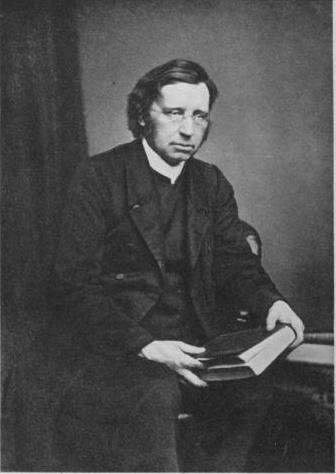
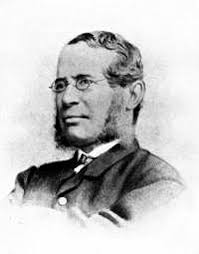
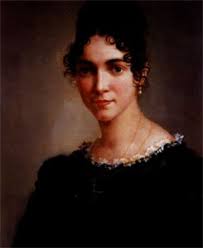
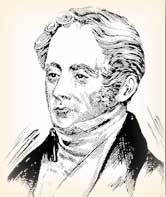
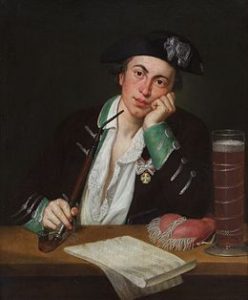

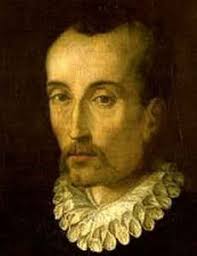
Linked. I thank you for this series.